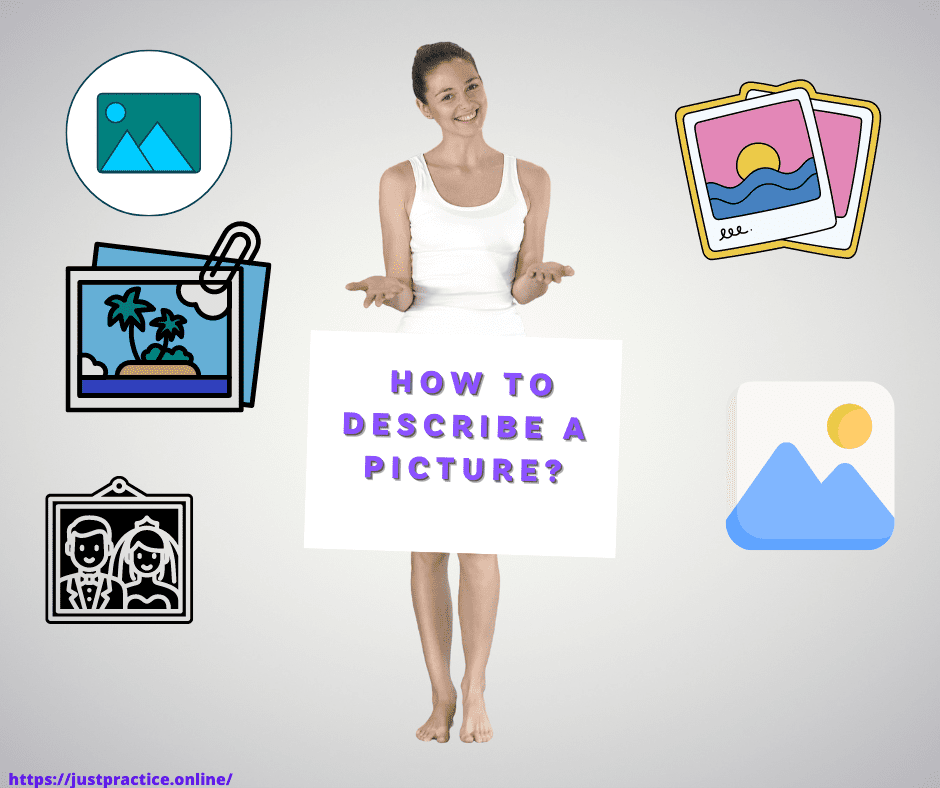
As a student, describing a picture can be a fun and creative way to practice your English language skills. Here are some tips on how to describe a picture:
- Start by looking at the picture and taking note of the details. Think about what is happening in the picture, where it is taking place, and who is in the picture.
- Use adjectives to describe the people, objects, and scenery in the picture. Adjectives are words that describe the qualities or characteristics of something. For example, if there are trees in the picture, you might describe them as tall, green, and leafy.
- Use prepositions to describe the position or location of the people and objects in the picture. Prepositions are words that show the relationship between two things. For example, if there is a cat on a table in the picture, you might say that the cat is on the table.
- Use action verbs to describe what is happening in the picture. Action verbs are words that describe an action, such as running, jumping, or playing. For example, if there are children playing in the picture, you might describe them as laughing, running, or chasing each other.
- Use adverbs to describe how the actions are being performed. Adverbs are words that describe the way in which an action is being performed, such as quickly, happily, or loudly. For example, if there is a person in the picture who is walking, you might describe them as walking slowly or walking confidently.
- Put all of your observations together to form a cohesive description of the picture. Use proper grammar and sentence structure to make your description clear and easy to understand.
Remember to practice describing a variety of different pictures to improve your English language skills. You can also use online resources or picture books to find new and interesting pictures to describe. Good luck!
Some exemples
Here are some examples of pictures you could describe:
- A picture of a beach with waves crashing on the shore. You could describe the blue water, the sandy beach, the seagulls flying overhead, and the people sunbathing or playing in the water.
- A picture of a city skyline at night. You could describe the tall buildings with lights shining in the windows, the traffic moving along the streets below, and the moon or stars in the sky.
- A picture of a mountain range with snow-capped peaks. You could describe the rugged terrain, the rocky cliffs, the trees and other vegetation growing on the mountainside, and any wildlife that might be present.
- A picture of a family having a picnic in a park. You could describe the green grass, the trees and flowers, the picnic blanket, the food and drinks on the table, and the family members chatting and laughing together.
- A picture of a person hiking in the woods. You could describe the trees and other foliage surrounding the person, the hiking trail, any wildlife or animals in the area, and the person’s backpack or other hiking gear.
These are just a few examples, but you can describe any picture you like using the tips I provided earlier. The key is to observe the details and use descriptive language to create a clear and engaging picture in your reader’s mind.
how about background,forground ,on the right etc…
Yes, describing the background, foreground, and other spatial relationships can be very helpful in painting a more detailed picture. Here are some additional tips to help you describe a picture using spatial relationships:
- Background: The background of a picture refers to the area furthest from the viewer. You can describe the background by using prepositions such as “in the distance,” “behind,” or “far away.” For example, “In the background, I can see a mountain range with snow-capped peaks.”
- Foreground: The foreground of a picture refers to the area closest to the viewer. You can describe the foreground by using prepositions such as “in front of,” “close up,” or “nearby.” For example, “In the foreground, there is a man sitting on a bench with his dog.”
- Left and right: You can describe the position of objects or people in the picture by using prepositions such as “on the left,” “on the right,” or “in the center.” For example, “On the right side of the picture, there is a woman holding a red umbrella.”
- Above and below: You can describe the vertical position of objects or people in the picture by using prepositions such as “above,” “below,” or “at the top.” For example, “Above the trees, I can see a flock of birds flying in formation.”
Using spatial relationships in your description of a picture can help to create a more complete and vivid image in the reader’s mind. Just be sure to use prepositions and adverbs correctly to ensure that your description is clear and easy to understand.